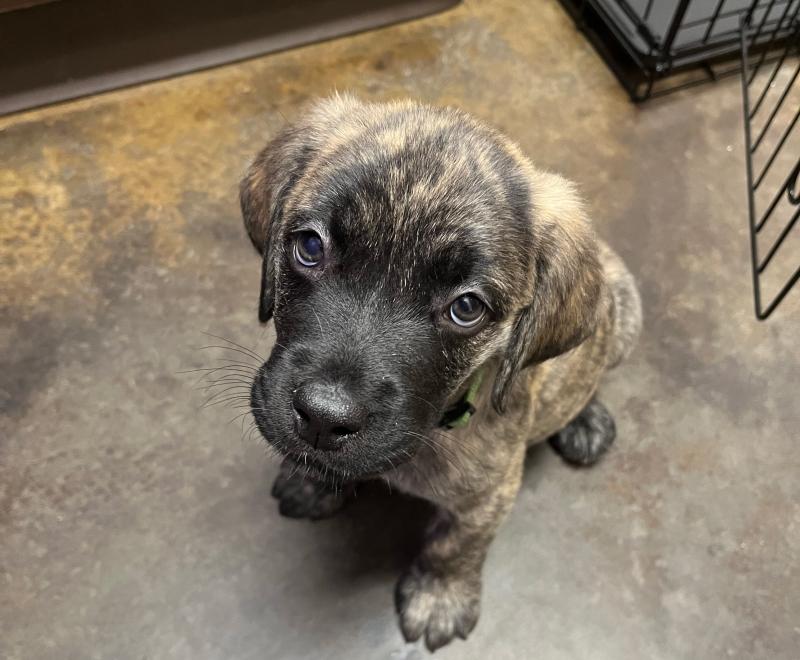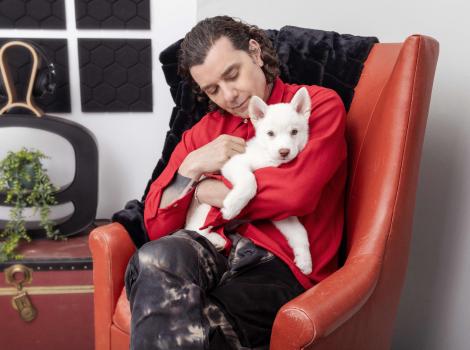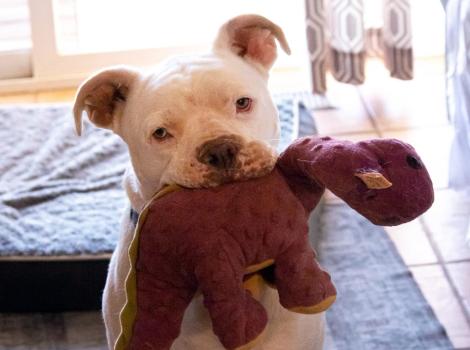Neighbors team up to save orphaned puppies

Laura Jones was home studying when she saw the neighborhood text. It was a call for help from Hannah Hunton, who lived nearby. Hannah’s police officer husband, Chace, had just brought home 11 tiny puppies, and she needed some reinforcements.
Earlier that evening, Chace was in an abandoned apartment building in southwest Little Rock, Arkansas, to check out reports of possible trespassing. And that’s when he heard the muffled squeals of some adorable furry trespassers.
In the corner of a room, Chace counted 11 tiny puppies in blond, brindle, and black. They appeared to be orphaned or abandoned, with no mama dog anywhere to be seen and no people in the area either.
Chace first reached out to the local animal shelter to report that he’d found a litter of puppies. If anyone was looking for the little family, they’d probably check with the shelter. But he didn’t take the puppies there because the shelter was filled to capacity and didn’t have enough staff or resources to care for 11 needy new residents so young that they weren’t yet eating on their own. The puppies would need bottle-feeding every few hours to keep them alive.
“I just couldn’t leave them (in the abandoned building),” says Chace. “So I found a box and put them all in.” Chace and Hannah would foster the puppies — but they’d need some help.
Best Friends’ goal is for all shelters nationwide to reach no-kill in 2025, and people who step up to foster pets, either with Best Friends or any animal shelter or rescue organization, play a vital part in reaching that goal.

A squadron of bottle-feeders
Meanwhile, texts were flying back and forth as Hannah began getting some responses to her mayday call. She also sent photos of the puppies to her sister, Natalie Shelton, a Best Friends staff person who lives in Little Rock, who then helped Hannah obtain bottle-feeding supplies, food, and veterinary care.
Meanwhile, Laura didn’t hesitate when asked to help. “I had never done anything like this before, but Hannah sounded desperate,” she says. “I volunteered to help bathe and feed the puppies, and when I arrived, I could see there was a lot to be done.”
[First-time foster volunteers team up for a mama dog and her 14 puppies]
A neighborhood puppy care coalition began to take shape as more people stopped by. First order of business was bathing some very dirty puppies and treating them for fleas. Laura says: “A couple of people began to show up. And the lady who brought bottle-feeding supplies showed us how to mix everything and how to feed. Once the pups got the hang of the bottle, they were ravenous.”
Thus ensued two days and nights of round-the-clock bottle-feeding at Hannah and Chace’s house. To make things simpler, they decided to divvy up the pups into groups of two and three and send them to other foster homes. “We sent people home with their puppies and a bag of supplies that had everything they needed,” says Hannah. “And I was finally able to get some sleep.”

It takes a village
“It was wonderful seeing this totally unstructured group come together to help the puppies,” says Natalie. “This could have been a completely overwhelming situation, but instead it succeeded because people were willing to volunteer time, work together, and support each other. None of this would have been possible without caring people willing to devote the time to help the puppies.”
[Foster family welcomes six puppies to the world]
Natalie says people who find themselves caring for newborn puppies should be persistent in calling shelters and veterinarians for advice. “They have a lot of knowledge that can be helpful. It’s just a matter of being proactive and reaching out.”
Despite everyone’s best efforts, unfortunately two of the puppies passed away due to health issues. But the nine others grew up healthy and strong. Eventually, two went to an organization in Chicago to be placed in homes, and seven puppies were adopted by families in Little Rock — including Laura’s family.

Winston (Winnie) and his new family
Laura says her volunteer experience, which became a seven-week commitment, was very much worth getting up all those times in the middle of the night to feed two littermates named Winston (Winnie) and Gilbert (Gibbie).
“The whole experience tugged on my heartstrings for sure,” she says. “They didn’t even weigh half a pound when I got them. I had to feed them with an eye dropper for a few days. And I cried when Gibbie got picked up for adoption.” (Gibbie was adopted by two Little Rock police officers who had lost their dog a year ago.)
Winnie, however, who at 11 weeks already tips the scales at 16 pounds, has joined Laura’s family full time. With his mixed DNA test leaning heavily toward the larger breeds, Winnie is projected to be a big boy, somewhere in the area of 70 to 90 pounds. And, true to form, Laura says her boy’s favorite thing is eating.
Ever since Winnie was tiny, he’s wanted to play with Laura’s 4-year-old dog, Kallie. “They play together so well,” says Laura. “Winnie is also very smart and has already learned to sit, shake hands, and he’s figured out the doggy door. He loves people. And when we go on walks, he wants to check everybody out.”
Laura says she just wanted to help out her neighbors and the puppies. But getting a new family member in addition to helping her neighbors has made the entire experience gratifying — something she’d recommend highly.
“I didn’t know people well in the beginning, but I soon got to know Hannah, Chace, and others — all wonderful people,” Laura says. “I thought helping out might be a good opportunity to show some compassion in action and that it would show my kids a good example of how to serve others when there’s a need. It’s something we always will remember.”

Let's make every shelter and every community no-kill in 2025
Our goal at Best Friends is to support all animal shelters in the U.S. in reaching no-kill in 2025. No-kill means saving every dog and cat in a shelter who can be saved, accounting for community safety and good quality of life for pets.
Shelter staff can’t do it alone. Saving animals in shelters is everyone’s responsibility, and it takes support and participation from the community. No-kill is possible when we work together thoughtfully, honestly, and collaboratively.






